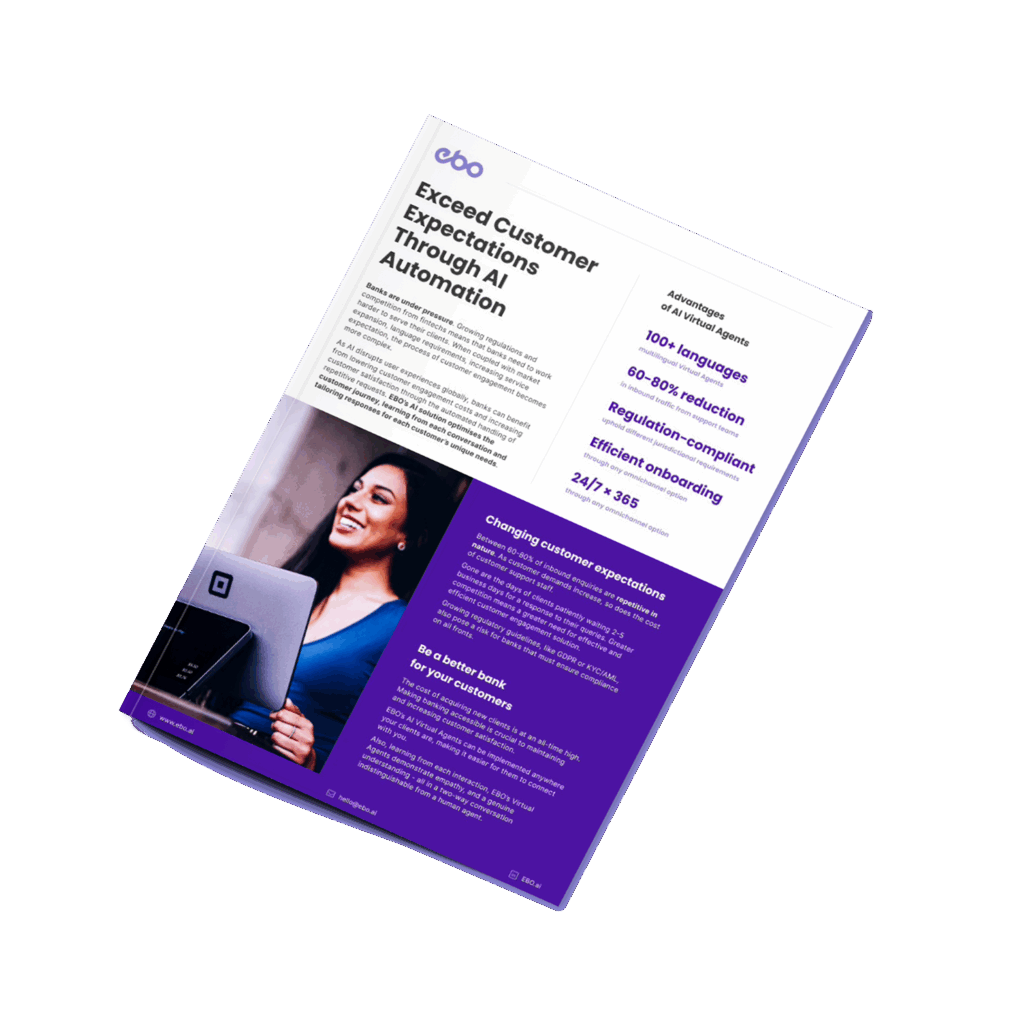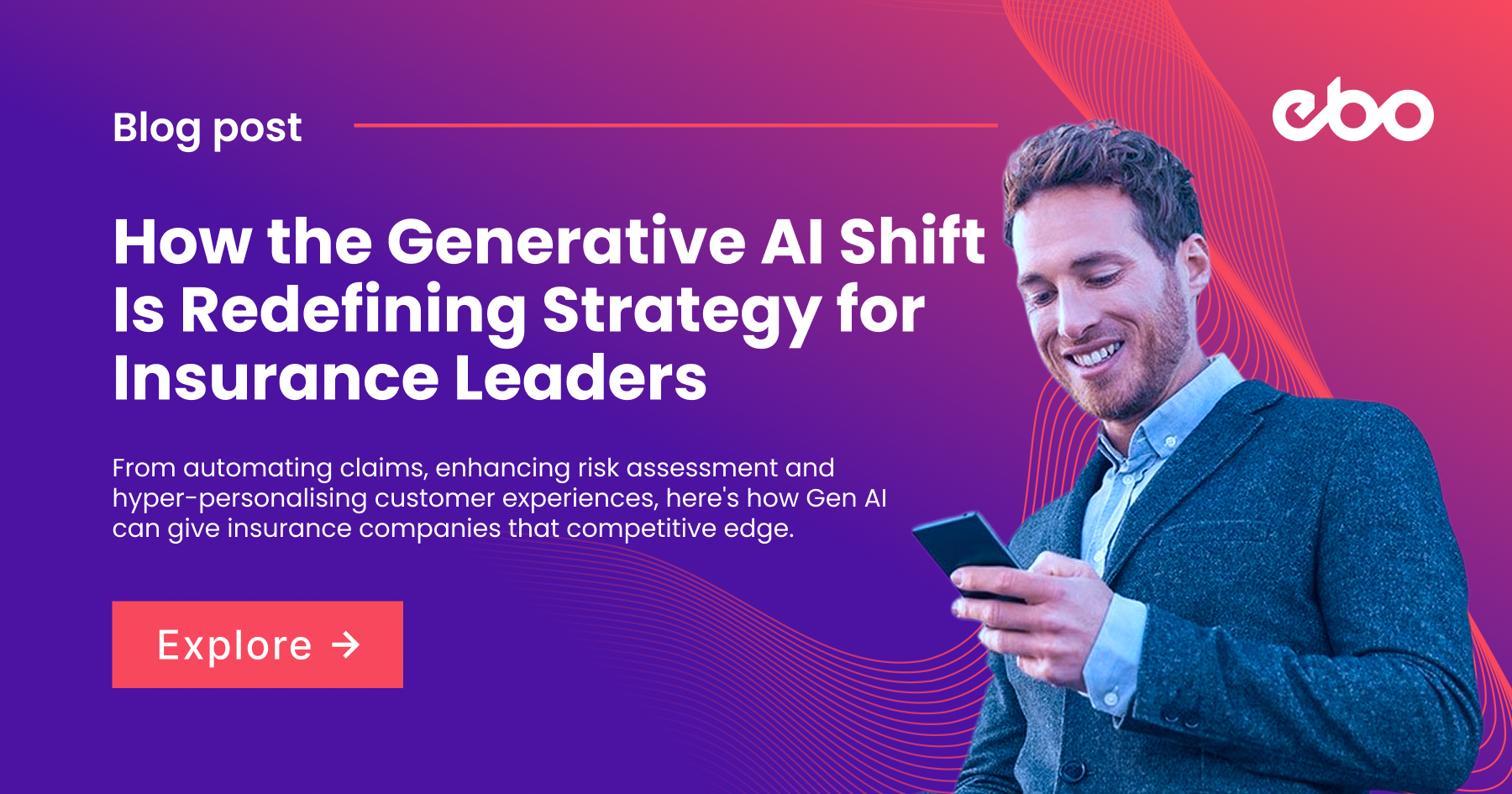The insurance industry is at a pivotal moment. Customers now expect instant, personalised, and meaningful interactions far beyond the static, scripted responses of the past. Generative AI (Gen AI) is redefining how insurance companies engage with their customers, enabling dynamic, human-like conversations that build trust and loyalty.
In this article we dive into the uses of Generative AI for insurance, how to get started and how to deploy it responsibly and at scale.
Traditional Automation vs Generative AI
Traditional automated systems often rely on rigid scripts, resulting in generic responses that fail to meet individual customer needs. Generative AI changes that by:
Creating Natural, Context-Aware Conversations
AI can carry on conversations that feel human, flowing naturally across topics instead of following a rigid script.
Delivering Personalised and Empathetic Interactions
Responses adapt to a customer’s profile, situation, or emotional state, fostering meaningful connections.
Expanding Support Coverage
AI taps into large knowledgebases, providing accurate guidance for complex queries that static scripts cannot handle.
Tailoring Content to each Consumer
For instance, when a customer explores savings plans, a generative AI system can tailor explanations for a young adult starting their first investment or a senior preparing for retirement, something fixed responses cannot achieve.
Compliance by Design
For regulated industries such as insurance, innovation must be balanced with accountability.
When choosing a Gen AI provider, it is crucial that the AI solution is built with compliance at its core. This dual approach allows insurers to deploy AI confidently, driving innovation while maintaining regulatory integrity and customer trust.
The AI must operate within strict boundaries, sourcing information only from vetted knowledge bases and adhering to local regulatory standards, privacy laws, and professional conduct guidelines.
Key Benefits for Insurance Companies
Adopting Generative AI delivers tangible, strategic advantages across multiple dimensions. Here are some examples:
Enhanced Customer Experience
Human-like, context-aware interactions create a more engaging and satisfying experience, directly boosting customer satisfaction and loyalty.
Accelerated Claims and Support Resolution
AI efficiently manages routine inquiries while seamlessly escalating complex cases to human agents, improving resolution times and operational efficiency.
Operational Efficiency
Dynamic response generation reduces manual script maintenance. Teams can focus on optimizing knowledge bases and strategic initiatives rather than repetitive content updates.
Strengthened Trust and Brand Loyalty
Consistent, accurate, and empathetic interactions reinforce customer trust, fostering long-term relationships and loyalty in a competitive market.
Strategic Value and ROI
By introducing natural, human-like conversations, Generative AI enhances customer satisfaction and deepens engagement, transforming routine exchanges into meaningful interactions that build trust and loyalty.
At the same time, it drives operational efficiency by autonomously managing routine queries, reducing the workload on human agents, and accelerating claim resolution times.
The technology’s ability to dynamically generate responses also minimises the need for manual script maintenance, allowing knowledge bases to stay current with far less effort.
With built-in controls and transparent oversight, insurers can innovate confidently, ensuring that every interaction remains both compliant and customer-centric.
Operationalising AI With a Purpose-Built Solution
Instead of offering generic models or standalone tools, EBO delivers a purpose-built Generative AI framework designed specifically for the realities of insurance: complex policies, sensitive data, stringent governance, and high-stakes customer interactions. Our platform embeds compliance by design, draws from vetted sources, and operates within transparent guardrails that ensure AI behaves predictably, responsibly, and in line with regulatory standards.
But its real strength lies in operationalisation. It enables insurers to deploy dynamic conversations across claims, policy servicing, onboarding, and advisory journeys, moving beyond theoretical AI potential into tangible business outcomes.
Each interaction is monitored for compliance and quality whilst escalation mechanisms and automated reporting ensure full transparency and accountability.
The insurance sector has spent the past few years experimenting with AI, testing pilots, exploring use cases, and assessing potential. But the industry is now entering a new phase where the question is no longer “Should we use AI?” but rather “How do we deploy it responsibly, at scale, and with measurable impact?”.
Are you ready to take your AI journey to the next level?
Download Your Guide to AI
Access our full Insurance Guide to explore how EBO’s AI elevates every stage of the customer journey, from onboarding to claims, renewals, and policy servicing.



